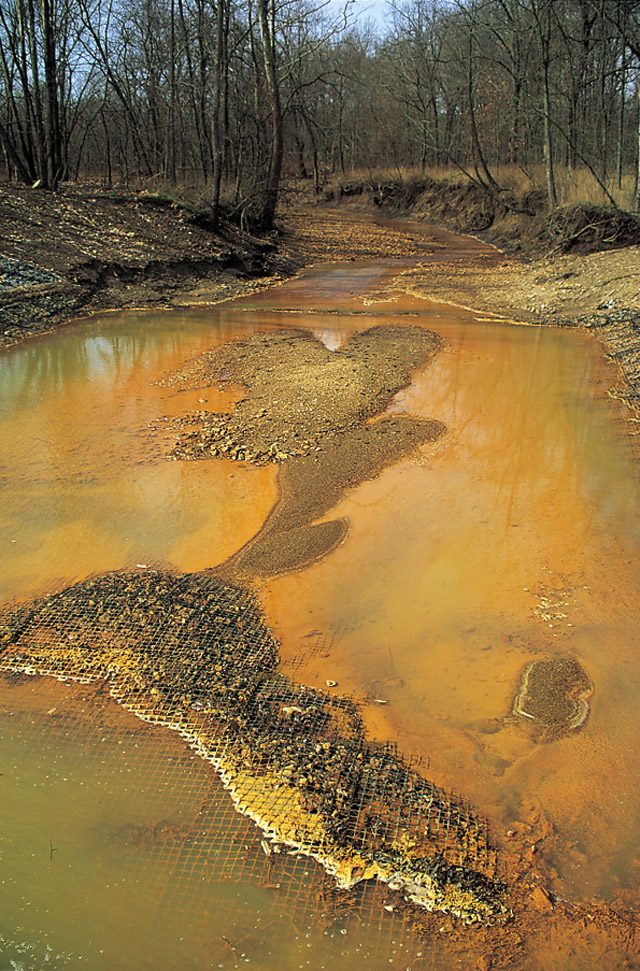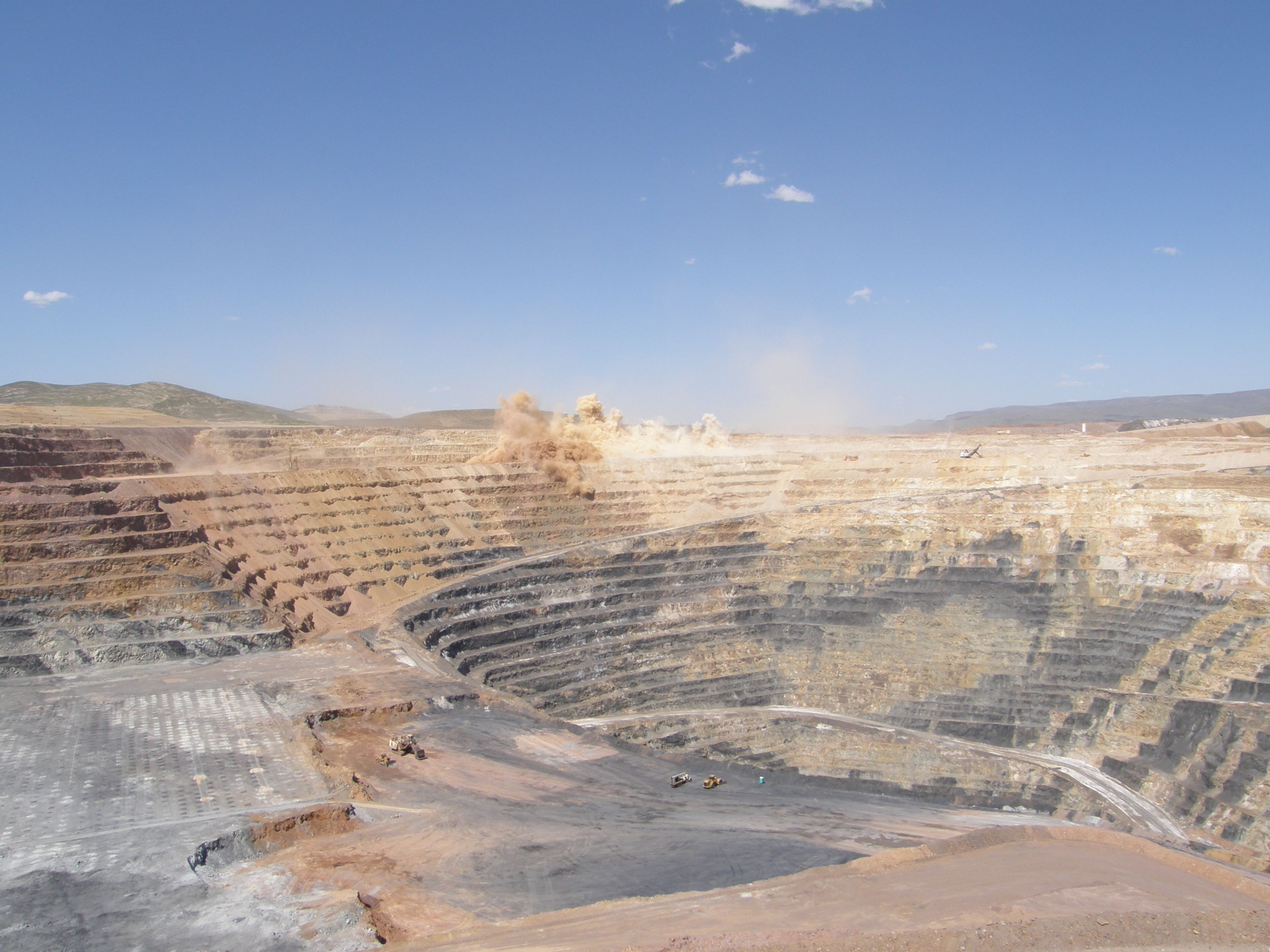|
Moose River Gold Mines, Nova Scotia
Moose River Gold Mines is a Canadian rural community located in Nova Scotia's Halifax Regional Municipality. It is at the junction of Moose River Road and Mooseland Road. No numbered highways run through Moose River Gold Mines. Gold was discovered in the area in 1866 and mining started in the 1870s. Interest waned around 1900 but rose in the 1930s. The community gained international attention in 1936 when three men were trapped in the mine. History Gold was first discovered in the area in 1866, but no mining took place until the 1870s when the area became known as the Moose River Gold District. Interest waned in the early 1900s but resumed in the 1930s and the mine was brought back into production in 1935. These historic workings produced some of gold, which was largely taken from quartz veins, but some also from open slate quarries. 1936 disaster On April 12, 1936, the roof of the mine collapsed, trapping three men, Herman Magill, David Robertson, and Alfred Scadding, down ... [...More Info...] [...Related Items...] OR: [Wikipedia] [Google] [Baidu] |
Halifax Regional Municipality
Halifax is the capital and most populous municipality of the Provinces and territories of Canada, Canadian province of Nova Scotia, and the most populous municipality in Atlantic Canada. As of 2024, it is estimated that the population of the Halifax Census Metropolitan Area, CMA was 530,167, with 348,634 people in its urban area. The regional municipality consists of four former municipalities that were Amalgamation (politics), amalgamated in 1996: History of Halifax (former city), Halifax, Dartmouth, Nova Scotia, Dartmouth, Bedford, Nova Scotia, Bedford, and Halifax County, Nova Scotia, Halifax County. Halifax is an economic centre of Atlantic Canada, home to a concentration of government offices and private companies. Major employers include the Canadian Armed Forces, Department of National Defence, Dalhousie University, Nova Scotia Health Authority, Saint Mary's University (Halifax), Saint Mary's University, the Halifax Shipyard, various levels of government, and the Port of ... [...More Info...] [...Related Items...] OR: [Wikipedia] [Google] [Baidu] |
Draegerman Courage
''Draegerman Courage'' is a 1937 American drama film directed by Louis King and written by Anthony Coldeway. The film stars Jean Muir, Barton MacLane, Henry O'Neill, Robert Barrat, Addison Richards and Helen MacKellar. The film was released by Warner Bros. on May 15, 1937. Plot Cast *Jean Muir as Ellen Haslett *Barton MacLane as Andrew Beaupre *Henry O'Neill as Dr. Thomas Haslett *Robert Barrat as Martin Crane *Addison Richards as John McNally *Helen MacKellar as Mrs. Mary Haslett * Gordon Oliver as Pete Lawson *Joseph Crehan as Dr. Stuart Hunter *Priscilla Lyon as Suzanne Haslett * Walter Miller as Maxwell *Herbert Heywood Herbert Heywood may refer to: * Herbert Heywood (footballer) * Herbert Heywood (actor) {{hndis, Heywood, Herbert ... as Steve *Ben Hendricks Jr. as Captain Harper References External links * 1937 films Warner Bros. films American drama films 1937 drama films Films directed by Louis King American black-and-white films 1930s Eng ... [...More Info...] [...Related Items...] OR: [Wikipedia] [Google] [Baidu] |
Surface Mines In Canada
A surface, as the term is most generally used, is the outermost or uppermost layer of a physical object or space. It is the portion or region of the object that can first be perceived by an observer using the senses of Visual perception, sight and Somatosensory system, touch, and is the portion with which other materials first interact. The surface of an object is more than "a mere geometric solid", but is "filled with, spread over by, or suffused with perceivable qualities such as color and warmth". The concept of surface has been abstracted and formalized in mathematics, specifically in geometry. Depending on the properties on which the emphasis is given, there are several inequivalent such formalizations that are all called ''surface'', sometimes with a qualifier such as algebraic surface, smooth surface or fractal surface. The concept of surface and its mathematical abstractions are both widely used in physics, engineering, computer graphics, and many other disciplines, pri ... [...More Info...] [...Related Items...] OR: [Wikipedia] [Google] [Baidu] |
Mining Communities In Nova Scotia
Mining is the extraction of valuable geological materials and minerals from the surface of the Earth. Mining is required to obtain most materials that cannot be grown through agricultural processes, or feasibly created artificially in a laboratory or factory. Ores recovered by mining include metals, coal, oil shale, gemstones, limestone, chalk, dimension stone, rock salt, potash, gravel, and clay. The ore must be a rock or mineral that contains valuable constituent, can be extracted or mined and sold for profit. Mining in a wider sense includes extraction of any non-renewable resource such as petroleum, natural gas, or even water. Modern mining processes involve prospecting for ore bodies, analysis of the profit potential of a proposed mine, extraction of the desired materials, and final reclamation or restoration of the land after the mine is closed. Mining materials are often obtained from ore bodies, lodes, veins, seams, reefs, or placer deposits. The exploitation of th ... [...More Info...] [...Related Items...] OR: [Wikipedia] [Google] [Baidu] |
Communities In Halifax, Nova Scotia
A community is a social unit (a group of people) with a shared socially-significant characteristic, such as place, set of norms, culture, religion, values, customs, or identity. Communities may share a sense of place situated in a given geographical area (e.g. a country, village, town, or neighborhood) or in virtual space through communication platforms. Durable good relations that extend beyond immediate genealogical ties also define a sense of community, important to people's identity, practice, and roles in social institutions such as family, home, work, government, TV network, society, or humanity at large. Although communities are usually small relative to personal social ties, "community" may also refer to large-group affiliations such as national communities, international communities, and virtual communities. In terms of sociological categories, a community can seem like a sub-set of a social collectivity. In developmental views, a community can emerge out of a col ... [...More Info...] [...Related Items...] OR: [Wikipedia] [Google] [Baidu] |
The Northern Miner (Canada)
''The Northern Miner'' is a weekly trade journal (formerly part of the Hollinger group) that reports on the mining industry. ''The Northern Miner'' began publication in Cobalt, Ontario, Canada, in 1915, and has since moved publication to Toronto Toronto ( , locally pronounced or ) is the List of the largest municipalities in Canada by population, most populous city in Canada. It is the capital city of the Provinces and territories of Canada, Canadian province of Ontario. With a p .... The weekly journal is considered to be the "leading authority on the mining industry in Canada", and " the mining industry's bible". References 1915 establishments in Ontario Trade magazines published in Canada Weekly magazines published in Canada Magazines established in 1915 Magazines published in Toronto {{mining-stub ... [...More Info...] [...Related Items...] OR: [Wikipedia] [Google] [Baidu] |
The Chronicle Herald
''The Chronicle Herald'' is a broadsheet newspaper published in Halifax, Nova Scotia, owned by Postmedia Network. History Early years Founded in 1874 as ''The Morning Herald'', the paper quickly became one of Halifax's main newspapers. The same company also owned the ''Evening Mail'', which was published in the afternoon. Its main competitors were the ''Chronicle'' in the morning, and the ''Star'' in the afternoon. By 1949 the papers had merged to become ''The Chronicle-Herald'' and ''Mail-Star'' respectively. Graham Dennis era Graham W. Dennis took over as publisher of the newspaper in 1954, at age 26, after the death of his father, senator William Henry Dennis, who in turn had succeeded senator William Dennis in running the paper. He led the newspaper for the next half century. Dennis was proud of the paper's independence and rebuffed numerous offers to buy it. He was known as a humanistic employer interested in the welfare of his employees, stating that his proudest moment ... [...More Info...] [...Related Items...] OR: [Wikipedia] [Google] [Baidu] |
Tailings
In mining, tailings or tails are the materials left over after the process of separating the valuable fraction from the uneconomic fraction (gangue) of an ore. Tailings are different from overburden, which is the waste rock or other material that overlies an ore or mineral body and is displaced during mining without being processed. Waste valorization is the evaluation of waste and residues from an economic process in order to determine their value in reuse or recycling, as what was gangue at the time of separation may increase with time or more sophisticated recovery processes. The extraction of minerals from ore can be done two ways: placer mining, which uses water and gravity to concentrate the valuable minerals, or hard rock mining, which pulverizes the rock containing the ore and then relies on chemical reactions to concentrate the sought-after material. In the latter, the extraction of minerals from ore requires comminution, i.e., grinding the ore into fine partic ... [...More Info...] [...Related Items...] OR: [Wikipedia] [Google] [Baidu] |
Gold Cyanidation
Gold cyanidation (also known as the cyanide process or the MacArthur–Forrest process) is a hydrometallurgical technique for extracting gold from low-grade ore through conversion to a water-soluble coordination complex. It is the most commonly used leaching process for gold extraction. Cyanidation is also widely used in silver extraction, usually after froth flotation. Production of reagents for mineral processing to recover gold represents 70% of cyanide consumption globally. While other metals, such as copper, zinc, and silver, are also recovered using cyanide, gold remains the primary driver of this technology. The highly toxic nature of cyanide has led to controversy regarding its use in gold mining, with it being banned in some parts of the world. However, when used with appropriate safety measures, cyanide can be safely employed in gold extraction processes. One critical factor in its safe use is maintaining an alkaline pH level above 10.5, which is typically controlle ... [...More Info...] [...Related Items...] OR: [Wikipedia] [Google] [Baidu] |
Canadian Broadcasting Corporation
The Canadian Broadcasting Corporation (), branded as CBC/Radio-Canada, is the Canadian Public broadcasting, public broadcaster for both radio and television. It is a Crown corporation that serves as the national public broadcaster, with its English-language and French-language service units known as CBC and Radio-Canada, respectively. Although some local stations in Canada predate its founding, the CBC is the oldest continually-existing broadcasting network in Canada. The CBC was established on November 2, 1936. The CBC operates four terrestrial radio networks: The English-language CBC Radio One and CBC Music, and the French-language Ici Radio-Canada Première and Ici Musique (international radio service Radio Canada International historically transmitted via shortwave radio, but since 2012 its content is only available as podcasts on its website). The CBC also operates two terrestrial television networks, the English-language CBC Television and the French-language Ici Radio-C ... [...More Info...] [...Related Items...] OR: [Wikipedia] [Google] [Baidu] |
Open-pit Mining
Open-pit mining, also known as open-cast or open-cut mining and in larger contexts mega-mining, is a surface mining technique that extracts rock (geology), rock or minerals from the earth. Open-pit mines are used when deposits of commercially useful ore or rocks are found near the surface where the overburden is relatively thin. In contrast, deeper mineral deposits can be reached using underground mining. Open-pit mining is considered one of the most dangerous industrial sector, sectors in the industrial world. It causes significant effects to miners' health, as well as damage to the ecological land and water. Open-pit mining causes changes to vegetation, soil, and bedrock, which ultimately contributes to changes in surface hydrology, groundwater levels, and flow paths. Additionally, open-pit produces harmful pollutants depending on the type of mineral being mined, and the type of mining process being used. Extraction Miners typically drill a series of test holes to locate ... [...More Info...] [...Related Items...] OR: [Wikipedia] [Google] [Baidu] |
Commemorative Plaque
A commemorative plaque, or simply plaque, or in other places referred to as a historical marker, historic marker, or historic plaque, is a plate of metal, ceramic, stone, wood, or other material, bearing text or an image in relief, or both, to commemorate one or more persons, an event, a former use of the place, or some other thing. Most such plaques are attached to a wall, stone, or other vertical surface. Many modern plaques and markers are used to associate the location where the plaque or marker is installed with the person, event, or item commemorated as a place worthy of visit. A monumental plaque or tablet commemorating a deceased person or persons, can be a simple form of church monument. Most modern plaques affixed in this way are commemorative of something, but not all. There are also purely religious plaques, and some signify ownership or affiliation of some sort. A plaquette is a small plaque, but in English, unlike many European languages, the term is not t ... [...More Info...] [...Related Items...] OR: [Wikipedia] [Google] [Baidu] |









